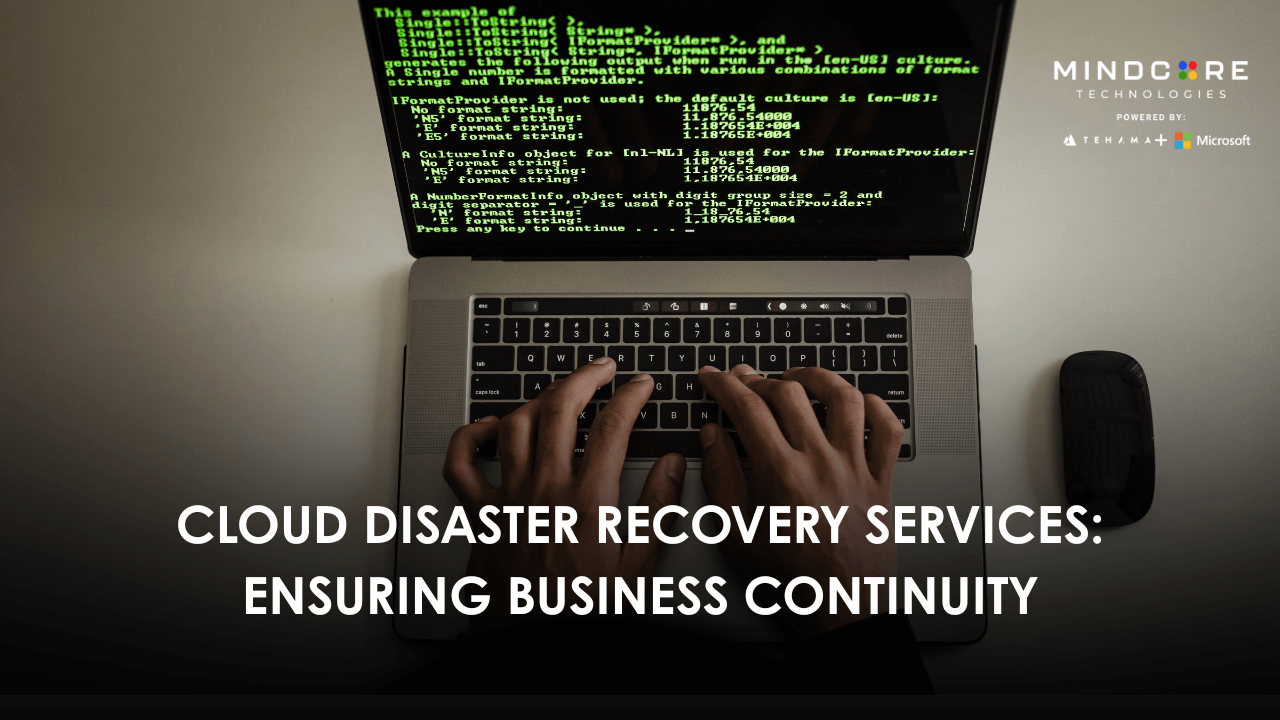When business systems go down, every minute counts. Whether it’s a cyberattack, power outage, or hardware failure, the goal is always the same: get back up and running as fast as possible. That’s where cloud disaster recovery services come in. They help businesses restore critical data and systems quickly without relying on physical infrastructure.
In this blog, you’ll learn what cloud disaster recovery really means, how it works, and why more companies are moving to cloud-based solutions to keep their business running no matter what happens.
What Is Cloud Disaster Recovery and Why It Matters
Cloud disaster recovery is a sort of system that backs up data and prepares it to run some recovery processes, not only on a server, like traditional ways of disaster recovery, but also in the cloud. It allows data retrieval anywhere in case there is a flood, fire, or some disaster in the office environment.
Unlike traditional backup systems, which depend solely on physical infrastructure, the cloud works on pretty much any computer available to the team with internet access. Hence, any files, applications, or complete systems can be restored remotely. This flexibility is becoming vital as businesses pivot more into hybrid working models and rapid outputs.
For businesses in areas like Delray Beach that are susceptible to storms and power outages, cloud-based disaster recovery continues to be a key ingredient in disaster recovery planning. The cloud offers another layer of protection that is not dependent on office operations.
Key Features of a Cloud Disaster Recovery Service
Good cloud recovery providers offer more than simply online backups; they really facilitate the speedy, easy, and secure restoration.
Instant Scalability
Your recovery plan can grow with your business. You don’t have to buy new hardware. You can scale your storage and protection levels as per your requirements.
Remote Access
Your team can work from home or other locations to access files and systems if the main office goes offline. This is beneficial for companies with remote workers or multiple branches.
Fast Recovery Times
With cloud-based systems, you can meet shorter RTOs (Recovery Time Objectives) and RPOs (Recovery Point Objectives). That means you can get back to work quickly and in the process lose less data.
Regional Redundancy
Often in cloud systems, your data is replicated across different geographic locations. So, although one server location may have faced a problem, your data is still safe elsewhere.
Flexible Pricing Models
Most cloud services operate on a pay-as-you-go model. This flexibility makes disaster recovery more affordable for firms that cannot invest heavily in large in-house infrastructure.
If you’re using a provider like AWS disaster recovery services, you’ll see how these features help businesses of all sizes recover fast without needing to build their own data centers.
When to Choose Cloud Over Traditional Backup Solutions
Not every business will need the same type of recovery setup. In some scenarios, though, cloud disaster recovery may simply be the right option.
- Your team is spread out across different cities or countries.
- You’re using hybrid or fully remote work setups.
- Your business can’t afford to go down for much longer than a few hours.
- Your physical servers are getting too old or too expensive to maintain.
- You want regular updates and testing without much manual effort.
Real-World Use Cases for Cloud Disaster Recovery
Cloud recovery is not a mere concept; it indeed represents a tangible solution being applied in many real-world business scenarios:
- During the peak sale, an ecommerce site attacked with a DDoS redirects its traffic to a backup system in the cloud to keep its tail feathers online.
- A SaaS startup accidentally deleted customer records and used the cloud restore point to recover the lost data.
- A law firm that lost power during a local outage was able to continue working using files and systems from the cloud.
They are good demonstration scenarios of how cloud recovery can co-work and supplement backup and disaster recovery services, providing protection for data and business processes in various ways.
How Cloud DR Supports Business Continuity Planning
Business continuity is not only focused on recovery but also on the immediate response to service interruptions that may arise in the case of a disaster.
Therefore, a cloud disaster recovery application extends your continuity plan by providing:
- Access to critical data at all times
- A monitoring application that alerts you to anything that goes wrong
- Compliance and audit tool integrations
- Scheduled testing so you can confirm everything is still working
This is where cloud recovery overlaps with disaster recovery testing and the broader importance of a disaster recovery plan for businesses. It turns your plan from something on paper into something that works in real life.
Common Pitfalls and What to Avoid
Even though cloud recovery has a lot of benefits, it’s not perfect. Here are a few common mistakes to watch out for:
- Assuming cloud backup is the same as cloud recovery (you need both storage and a plan to restore systems)
- Use of a slow Internet or unreliable network setup that results in a lag in accessing data.
- Not checking for cloud compatibility regarding business applications.
- Failing to test the system regularly.
- Leaving files accessible without proper use rights control.
Avoiding these mistakes can make recovery plans work during the time they are needed most.
Choosing a Cloud Disaster Recovery Provider
Picking the right partner is key. You’ll want to look at more than just cost. Consider things like:
- Where their servers are located
- What compliance standards do they follow (HIPAA, SOC 2, ISO)
- Whether they offer automation and dashboards
- If they provide local support in addition to global access
It also helps to compare them against other disaster recovery service providers to see which one fits your business best.
Final Thoughts: Making Cloud Part of Your Resilience Strategy
Cloud disaster recovery solutions are not merely for large tech businesses. They concern any organization that wants to stay online, protect customer data, or recover from sudden challenges.
You do not have to change your existing system just to benefit from the cloud. In fact, many businesses use a hybrid setup, combining cloud-based recovery with local backups to get the best of both worlds.
With the increase in threats and demands for uptime, organizations have come to have cloud disaster recovery as an essential layer of protection. This is where you start if you want to make your operations future-proof.

